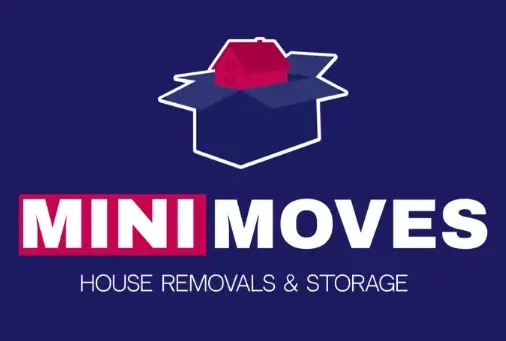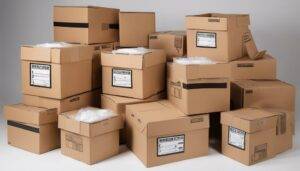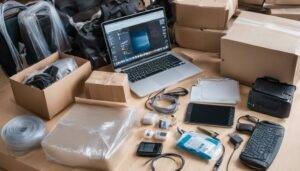Top Packing Tips for a Quick Move
Moving can be quite the endeavor, but with the right approach, it doesn’t have to be overwhelming. We’ve compiled the top 10 packing tips to make your move quick and easy. From starting early and decluttering to using quality packing supplies and labeling everything, each step is designed to streamline the process. We’ll also discuss how to protect your fragile items and make the most of your suitcases and essential bags. Curious about how professionals can add efficiency to your move? Let’s get into it and make your next move the smoothest one yet.
Start Early
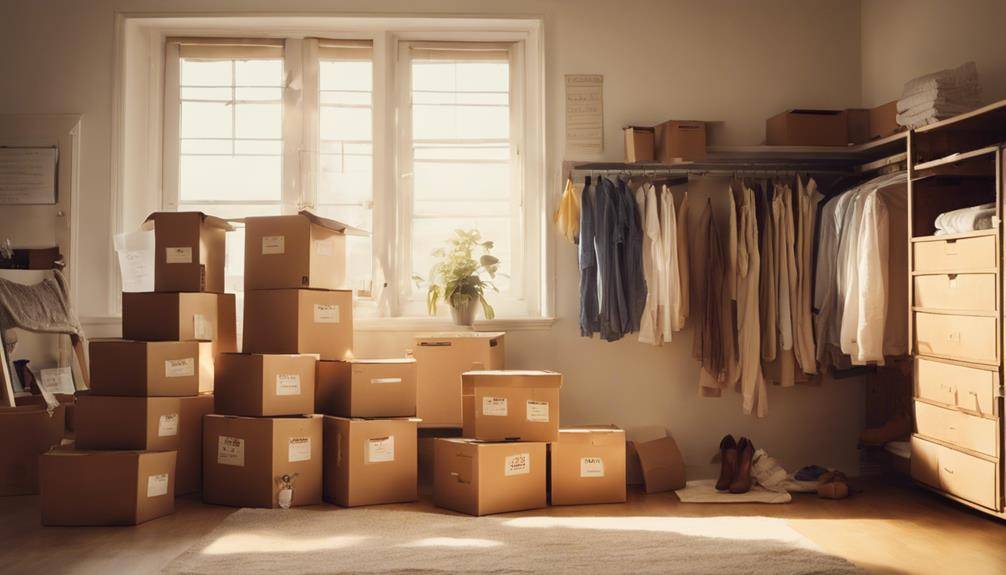
One of the most essential steps in guaranteeing a smooth move is to start early. When we kick off the moving process ahead of time, we give ourselves ample room to breathe and plan effectively. Time management becomes our best friend, helping us avoid last-minute scrambles and unnecessary stress. It’s all about breaking down the overwhelming task of moving into manageable chunks. First, let’s talk about our packing strategy. By starting early, we can gradually gather packing materials like boxes, tape, and bubble wrap. It allows us to be strategic, packing non-essential items first. Think seasonal clothes, books, or decor items. This way, our daily lives aren’t disrupted too soon. Creating a timeline is another vital aspect of time management. Let’s set specific deadlines for different stages of packing. For instance, we can allocate one week to pack up the kitchen and another for the living room. This structured approach guarantees we stay on track without feeling overwhelmed. When we start early, we also have the luxury of sorting and organizing our belongings efficiently. We can label boxes clearly, making unpacking at our new place a breeze. Plus, we can take our time to protect fragile items properly, reducing the risk of damage during the move. In essence, starting early isn’t just about getting a head start—it’s about creating a clear, organized, and efficient packing strategy. By managing our time wisely, we set ourselves up for a move that’s as stress-free as possible. So, let’s get started now and make this change a smooth one!
Declutter First
Before we start packing, let’s sort out what we truly need and what we can live without. By separating essential items from things we no longer use, we can donate unwanted belongings and make our move much easier. This way, we’re not hauling unnecessary items to our new place.
Sort Essential Items
When it’s time to tackle the task of sorting essential items, we should start by decluttering our space. This initial step sets the stage for effective packing strategies and guarantees essential organization throughout the process. First, let’s identify the items we use daily or can’t live without for the first few days in our new home. These are our essentials. Think about things like toiletries, medications, a change of clothes, important documents, and basic kitchen supplies. Next, we should create a “first-night” box. This box will contain everything we need immediately upon arrival at our new place. Label it clearly and keep it separate from the rest of the packed boxes. This strategy saves us from digging through multiple boxes when we’re tired from the move. While sorting, it’s helpful to categorize items by room. This makes unpacking more straightforward and keeps us organized. We should also be mindful of any valuable or fragile items and pack them with extra care to avoid damage.
Donate Unwanted Belongings
As we begin the process of donating unwanted belongings, it’s crucial to start with a thorough decluttering of our space. Not only does this make our move easier, but it also offers numerous benefits. By donating items, we’re giving back to our community and supporting charitable organizations. Plus, our donations can help local shelters and second-hand shops. When sorting through our possessions, keep in mind the following:
- Donation centers: Research local centers to find the best places to drop off our items.
- Tax deductions: Remember that donated items can sometimes be claimed as tax deductions.
- Community outreach: Our donations can make a significant impact on those in need within our community.
- Eco-friendly practices: Donating helps reduce waste, making our move more environmentally conscious.
- Minimalistic lifestyle: Embracing a minimalistic lifestyle can simplify our lives and reduce future clutter.
Decluttering not only helps us lighten the load but also supports eco-friendly practices by keeping items out of landfills. It’s a win-win situation. Through community outreach and giving back, we contribute to the well-being of others. Let’s take advantage of the decluttering benefits and make this move a smooth change.
Gather Supplies
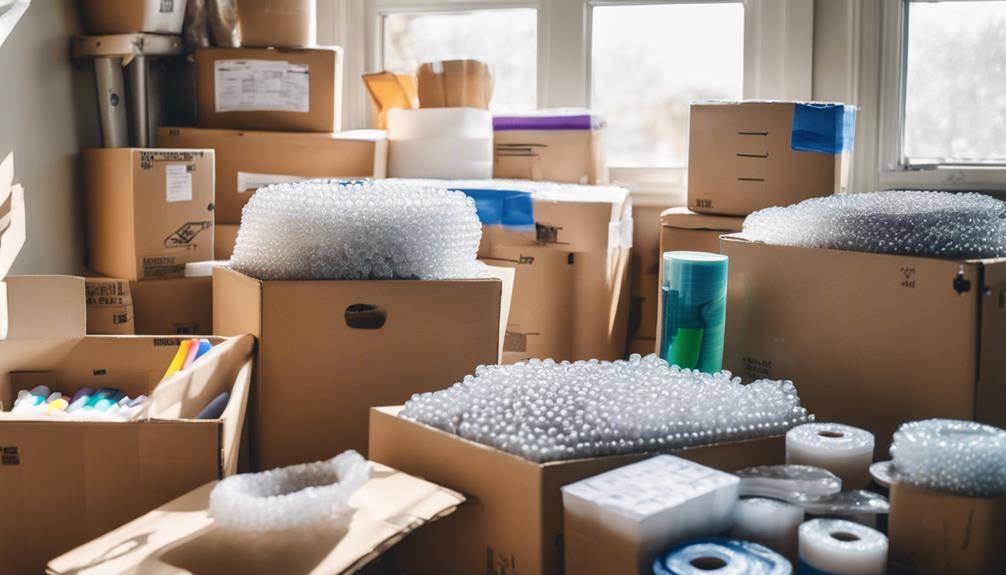
To efficiently tackle the packing process, let’s begin by gathering all necessary supplies. Having the right packing materials on hand will save us a lot of time and stress as we start organizing our belongings. First, we’ll need sturdy boxes in various sizes. While we’ll discuss the importance of quality boxes later, having a mix of sizes helps accommodate different items. Next, we should get packing tape. Opt for strong, durable tape to guarantee our boxes stay sealed during the move. Bubble wrap and packing paper are also essential for protecting fragile items. We can use old newspapers, but packing paper is less likely to leave ink stains. Markers and labels are vital for our organizing techniques. By clearly labeling each box with its contents and the room it belongs in, we’ll make unpacking a breeze. Don’t forget to mark boxes with fragile items as “Fragile” so movers handle them with care. We’ll also need scissors or a box cutter for cutting tape and opening boxes, along with packing peanuts or foam for extra cushioning. If we’re dealing with large or awkward items like mirrors or art, moving blankets and stretch wrap can offer added protection. Let’s not underestimate the significance of a good checklist. It’s a simple yet effective organizing technique to keep track of what’s packed and what’s left to do. By gathering all these essential supplies before diving into the packing, we’ll streamline the process and reduce last-minute scrambles. With everything in place, we can pack efficiently and guarantee our belongings are well-protected.
Use Quality Boxes
While packing for a move, investing in quality boxes can’t be overstated. We’ve all experienced the frustration of flimsy boxes collapsing at the worst possible moments. By choosing sturdy, reliable boxes, we guarantee box durability and packing efficiency, which makes the entire moving process smoother and less stressful. When we use high-quality boxes, we minimize the risk of damage to our belongings. They can withstand the weight and pressure that come with stacking and transporting. This not only protects our items but also saves us time and money in the long run. Here are some key benefits:
- Increased Protection: Quality boxes provide better cushioning and support, reducing the risk of breakage.
- Easier Stacking: Sturdy boxes stack neatly without crushing, maximizing space in the moving truck.
- Variety of Sizes: High-quality boxes come in various sizes, making it easier to pack everything from books to kitchenware efficiently.
- Reusable: These boxes can be used again for storage or future moves, offering long-term value.
- Eco-Friendly Options: Many quality boxes are made from recycled materials, helping us reduce our environmental footprint.
By focusing on box durability, we’re also enhancing our packing efficiency. Quality boxes are designed to handle specific weights and can be securely sealed, reducing the likelihood of spills or accidents. This means we can pack more effectively, knowing our items are safe and secure. Ultimately, opting for quality boxes is an investment in a stress-free move. We avoid the hassle of dealing with damaged items and can focus on settling into our new homes. So let’s make sure we prioritize this essential step in our packing process.
Label Everything
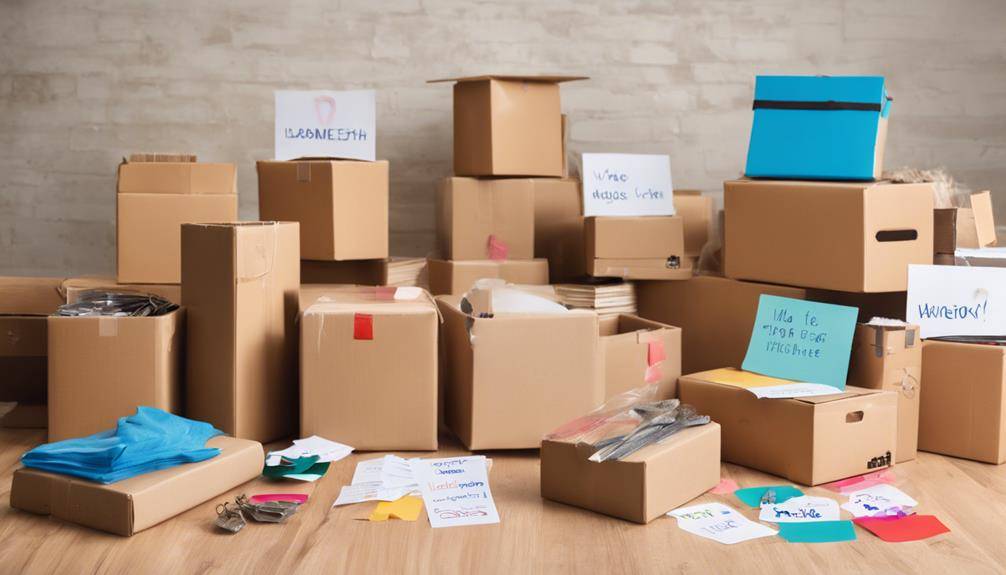
Organization is the key to a smooth and efficient move, and one of the simplest yet most effective ways to achieve this is by labeling everything. We can’t stress enough how much time and stress this saves during both the packing and unpacking phases. Let’s explore some practical organizational tips that’ll make labeling a breeze. First, invest in a good label maker. These handy devices allow us to create clear, easy-to-read labels that won’t smudge or fade. If a label maker isn’t in the budget, permanent markers work just fine—just make sure they’re bold and legible. Next, consider color coding as part of our packing strategies. Assigning a specific color to each room or category, like red for the kitchen or blue for the bedroom, makes identifying boxes at a glance much easier. We can use colored tape or stickers to mark the boxes accordingly. This simple trick can expedite our moving day by guaranteeing boxes end up in the correct rooms right from the start. When labeling, don’t just write the room name. Include a brief description of the contents inside. For example, instead of just “Kitchen,” write “Kitchen – Pots and Pans.” This additional detail helps us prioritize which boxes to unpack first and prevents us from rummaging through multiple boxes to find a single item.
Pack Room by Room
After we’ve meticulously labeled and organized our boxes, the next step is to focus on packing room by room. This strategy not only simplifies the packing process but also guarantees that our new home will be organized from the start. By concentrating on one room at a time, we can avoid the chaos that often accompanies moving. Here’s how to make the most of this method. First, we should gather all the packing supplies we need for each room, such as boxes, tape, and markers. Then, we can follow these key packing strategies:
- Start with the least-used rooms: Begin packing rooms like the guest bedroom or storage areas. This way, our daily routine won’t be disrupted early on.
- Declutter as we go: Take this opportunity to sort through items and decide what to keep, donate, or discard. This will lighten our load and make room organization easier in our new place.
- Pack similar items together: Group items by category, such as books, linens, or kitchen utensils. This will make unpacking more efficient and help maintain room organization.
- Label boxes by room and contents: Clearly mark each box with the room it belongs to and a brief description of its contents. This will save us time and frustration when unpacking.
- Tackle one room per day: If possible, dedicate a day to each room. This approach prevents us from feeling overwhelmed and makes the task more manageable.
Protect Fragile Items
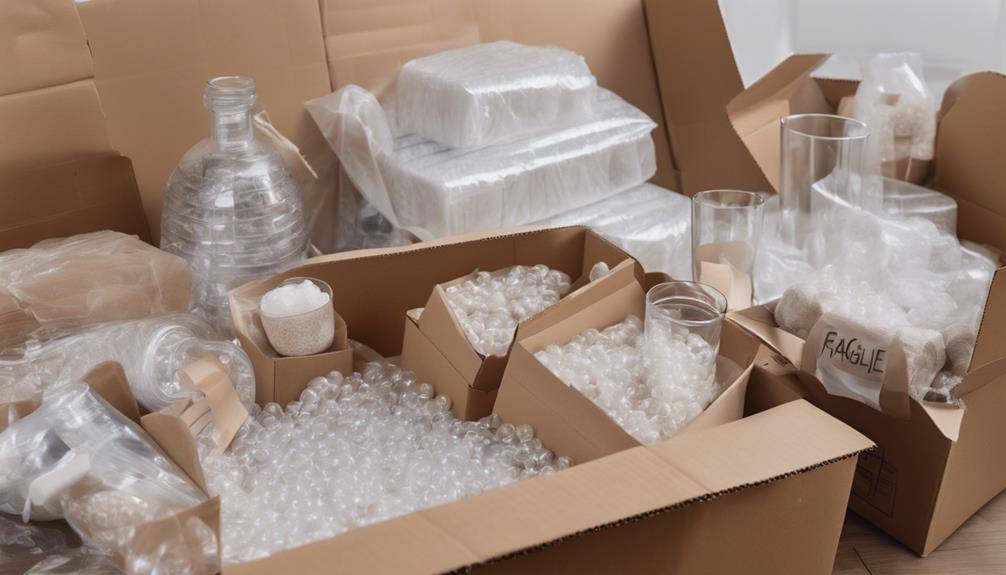
Guaranteeing the safety of our fragile items during a move is vital to avoid any unfortunate breakages. To start, we need to wrap each delicate item in bubble wrap, which provides a cushioned layer that helps in damage prevention. For those especially delicate pieces, we can add packing peanuts to fill any gaps in the boxes, giving extra padding and guaranteeing items don’t shift during transit. Custom boxes are a great investment. They’re designed to hold specific items securely, minimizing movement and maximizing transport safety. Pair these boxes with protective blankets, especially for larger, fragile items like mirrors or artwork. These blankets add an additional layer of protection against bumps and knocks. Labeling is another important step. Clearly mark all boxes containing fragile items with “FRAGILE” on multiple sides. This guarantees movers handle these boxes with the extra care they require. We should also use secure padding within the boxes, like foam inserts or crumpled paper, to further stabilize our items. Proper stacking techniques play a significant role in protecting fragile items. Always place the heaviest items at the bottom and lighter, more delicate ones on top. This prevents the heavier items from crushing the lighter ones below. Additionally, our cushioning methods should be high-quality. Using a combination of bubble wrap, packing peanuts, and protective blankets guarantees that every nook and cranny is filled and our items are securely nestled.
Use Suitcases and Bags
While protecting our fragile items is paramount, leveraging the utility of suitcases and bags can streamline the moving process. Suitcases and bags aren’t just for travel; they’re perfect for packing up our homes efficiently. By utilizing the suitcase organization strategies we already understand, we can maximize space and guarantee everything is easy to find once we’re in our new place. First, let’s consider the benefits of using suitcases and bags. They’re sturdy, often have wheels, and can be easily transported. Here are a few tips to make the most out of them:
- Clothing Transport: Rolling clothes and placing them in suitcases not only saves space but also reduces wrinkles.
- Heavy Items: Books and other heavy objects are best transported in rolling suitcases to avoid strain.
- Bag Versatility: Backpacks and duffel bags are perfect for odd-shaped items that don’t fit neatly into boxes.
- Layering: Use layers within suitcases to separate different categories of items, keeping them organized.
- Valuables: Important documents and valuables can be kept secure and within reach in a carry-on suitcase.
Suitcase organization is key. By categorizing our belongings and packing them accordingly, we avoid the chaos that often accompanies unpacking. For instance, we can designate one suitcase for bathroom essentials and another for kitchen items. This way, we are aware exactly where to find what we need immediately after moving. Bag versatility is a game-changer. Duffel bags can hold everything from shoes to sports equipment, making them indispensable during a move. Backpacks are great for electronics and chargers, ensuring they stay protected and accessible. By thoughtfully utilizing our suitcases and bags, we can make our move smoother and more organized.
Keep Essentials Handy
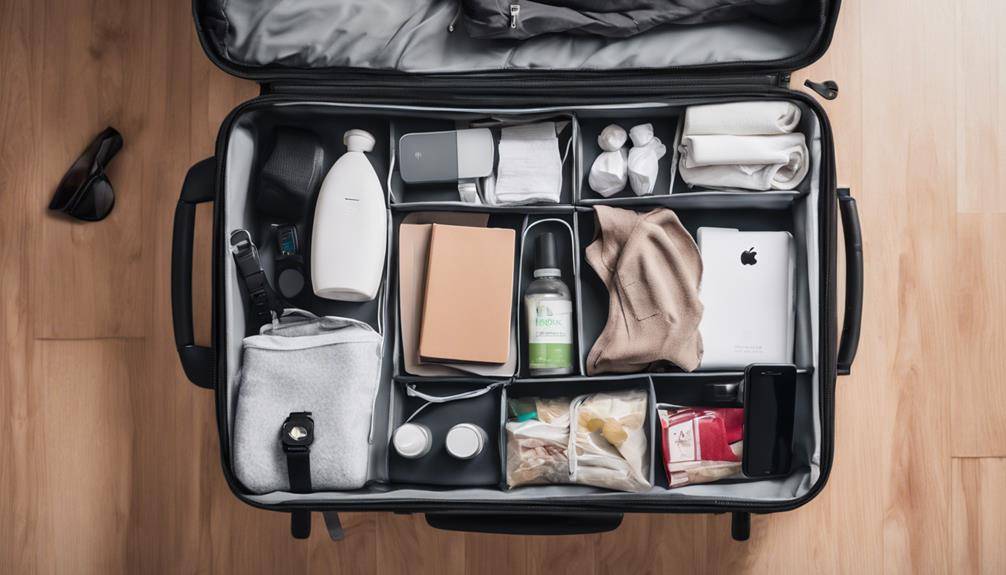
When we’re in the midst of a move, keeping essentials handy is vital. Let’s pack a small bag with immediate access items, daily necessities, and an emergency kit. This way, we’ll have everything we need without rummaging through all those boxes.
Immediate Access Items
One crucial aspect of a smooth move is having immediate access to essential items. When we’re in the midst of moving chaos, the last thing we want is to dig through countless boxes to find our toothbrush or phone charger. By packing a separate bag or box with immediate essentials, we guarantee we have quick access to the items we’ll need right away. Here are some suggestions for immediate essentials to keep handy:
- Toiletries: Think toothbrush, toothpaste, soap, and any medication you take daily.
- Chargers: Phone, laptop, and any other essential electronics.
- Important documents: IDs, passports, lease agreements, and any other critical paperwork.
- Basic kitchen supplies: A few utensils, a couple of plates, and maybe a kettle for that much-needed coffee.
- Change of clothes: Comfortable attire for the first day or two in your new home.
Daily Necessities
Having immediate access to essentials is a great start, but we also need to think about our daily necessities. There’s nothing worse than rummaging through boxes to find a toothbrush or a hairbrush. That’s why we should create a dedicated toiletries checklist. This checklist should include items like toothpaste, soap, shampoo, conditioner, and any personal care products we use daily. Packing these items in a clearly labeled bag guarantees we won’t be scrambling for them when we arrive at our new home. Next, let’s talk about meal prep. Moving can be exhausting, and the last thing we want is to spend hours in the kitchen after a long day. We should plan and pack some easy-to-make meals or even pre-cooked dishes. Consider packing a small box with basic kitchen essentials like a frying pan, a pot, a spatula, and some non-perishable food items. This way, we can whip up a quick meal without having to unpack the entire kitchen.
Emergency Kit
An essential aspect of any move is having an emergency kit on hand. We all know moving can be chaotic, so having a kit with essentials can make a world of difference. This kit should be easily accessible and contain items that can help us handle unexpected situations or just get through the first night in our new place. Here’s a quick rundown of what we should include:
- First aid kit: Accidents happen, and having bandages, antiseptics, and pain relievers can be a lifesaver.
- Snack supplies: Moving is exhausting, and having some non-perishable snacks and bottled water can keep our energy levels up.
- Emergency contacts: A list of crucial phone numbers, including family, friends, and movers, just in case our phone dies or gets misplaced.
- Flashlight with extra batteries: Power outages or late-night unpacking calls for reliable light sources.
- Travel documents and medication inventory: Keep passports, IDs, and any necessary medications within reach.
Don’t forget about our furry friends; packing some pet essentials like food, water, and a leash can help keep them calm. Hygiene products like toothpaste, soap, and toilet paper are also must-haves. With this emergency kit, we’ll be better prepared to handle anything that comes our way during the move.
Hire Professionals
When it comes to moving, hiring professionals can make all the difference in ensuring a smooth and stress-free experience. We’re all been there—boxes stacked haphazardly, fragile items precariously packed, and the overwhelming feeling that we might never get it all done. That’s where moving services come into play. By enlisting the help of professional packers, we can save time, avoid potential damage to our belongings, and reduce the overall stress associated with moving. First and foremost, professional packers are experts at what they do. They understand how to pack items securely and efficiently, ensuring that everything from our heirloom china to our latest tech gadgets arrive at our new home in one piece. We might think we understand how to pack a box, but these pros take it to another level with specialized techniques and materials. Moreover, using moving services can greatly cut down on the time it takes to get everything ready. What might take us days or even weeks can be accomplished in a fraction of the time by a skilled team. This allows us to focus on other important aspects of the move, like setting up utilities, forwarding mail, and settling into our new neighborhood. Another huge advantage is the physical labor saved. Let’s face it, moving is hard work. By hiring professionals, we avoid the strain and potential injuries that come with lifting heavy furniture and maneuvering tight corners. In the end, investing in professional moving services can offer peace of mind, efficiency, and a much smoother change to our new home. It’s a decision that can truly transform the moving experience from intimidating to doable.
